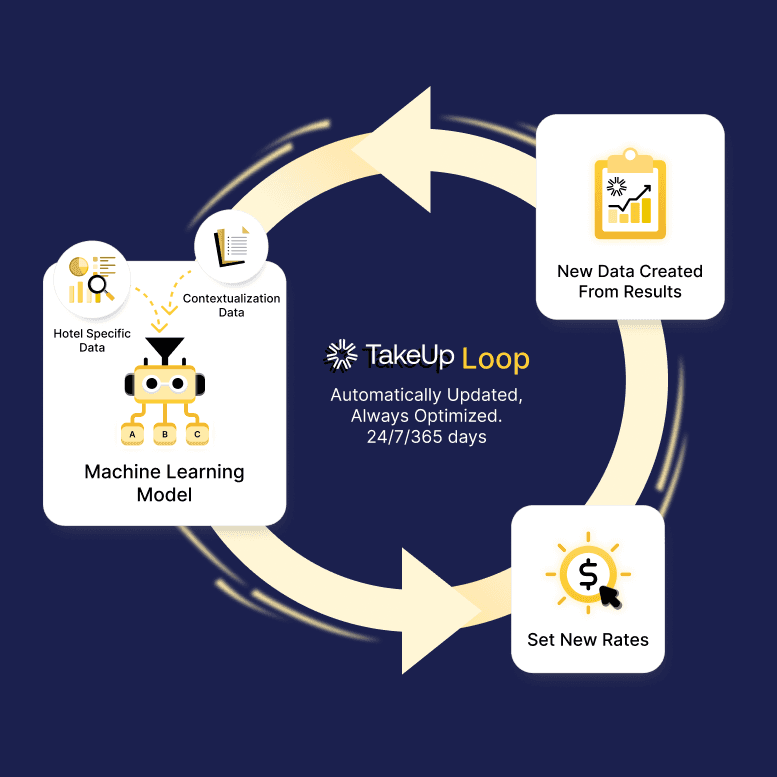Design Case Study
When I joined TakeUp, they were two years into their journey, without a single interface designed and minimal engagement with their target customers. Here's how I played a key role in propelling them towards a $6M Seed Round.
Challenge
When I joined TakeUp, the startup had already invested approximately $2.5 million in salaries over two years without releasing an MVP. The team consisted of four Data Scientists and two Business Consultants, with no design, development, or marketing strategies in place. The mission was clear: leverage AI and machine learning to automate hotel room rate settings. However, without a tangible product, the team lacked crucial market feedback.
My Role
As the lead product designer, I oversaw the entire design process, from user research to final product launch. My responsibilities included:
Conducting user research and interviews
Developing user personas and journey maps
Designing wireframes and interactive prototypes
Conducting usability testing and iterative design improvements
Collaborating with a low-code development agency for implementation
Research & Discovery
My first task was to understand the landscape and the users. I conducted extensive research on competitors, analyzing their product positioning, must-haves, and nice-to-haves. Concurrently, I initiated user-centered design tasks, including:
User Interviews: Conducted day-in-the-life interviews with early adopters to understand their pain points and needs.
User Personas: Developed detailed personas to represent our target users, helping the team stay focused on user needs.
User Journey Mapping: Mapped out the existing process hotel owners used to set room rates, identifying pain points and opportunities for automation.
Synthesis & Ideation
After gathering insights, I synthesized the data to inform key product decisions. Common themes and pain points were identified, which became the foundation for our design process. I communicated these findings to the team, ensuring alignment and shared understanding.
Designing the MVP
With a clear vision shaped by user insights, I began designing the interface for our MVP. The goal was to create a functional, user-friendly product that could validate our assumptions and provide a foundation for further development.
Wireframing and Prototyping: Created wireframes and interactive prototypes to visualize the user flow and key interactions.
Usability Testing: Conducted usability tests to gather feedback on the design, iterating based on user input to refine the experience.
Kano Model Analysis: Used the Kano model to prioritize features based on user satisfaction and impact, ensuring we focused on high-value functionalities.
Development and Launch
Given the urgency to launch, we partnered with a low-code development agency. I served as the direct report for the agency, overseeing the implementation of my designs. This involved:
Ensuring Responsiveness and Interactions: Worked closely with the development team to ensure the product was responsive and interactions were seamless.
Quality Assurance: Conducted thorough testing to identify and resolve bugs, ensuring a smooth user experience.
Conclusion
The launch of our MVP marked a significant turnaround for TakeUp. The product received positive feedback from early users, strengthening our customer acquisition funnel, and leading to $6 million in additional funding for our VC partners.
Key Takeaways
User-Centered Design: Prioritizing user needs through interviews, personas, and journey mapping.
Iterative Process: Using feedback and testing to refine the product continuously.
Collaboration: Working closely with cross-functional teams and external agencies to ensure successful implementation.
I'm very proud to present this project as it not only demonstrated my ability to design effective solutions under tight constraints, but also highlighted the critical role of design in driving business success.











